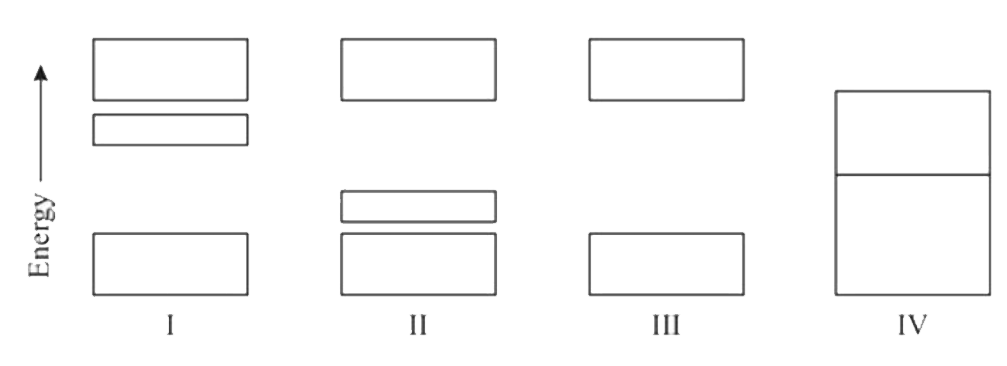Can we take one slab of p - type semiconductor and physically
join it to another n - type semiconductor to get p - n junction?
To determine whether we can physically join a slab of p-type semiconductor to a slab of n-type semiconductor to create a p-n junction, we can follow these steps:
Step 1: Understanding P-N Junctions
A p-n junction is formed when p-type and n-type semiconductors are brought together. In a p-type semiconductor, holes (positive charge carriers) are the majority carriers, while in an n-type semiconductor, electrons (negative charge carriers) are the majority carriers.
Step 2: Physical Joining of Semiconductors
When we attempt to physically join a p-type semiconductor to an n-type semiconductor, we need to ensure that there are no gaps or spaces between the two materials. A continuous interface is essential for the formation of a functional p-n junction.
Step 3: Microscopic Gaps
In practice, when two slabs of p-type and n-type semiconductors are brought together, it is very difficult to achieve a perfect contact without any microscopic gaps. These gaps can arise due to imperfections in the surfaces of the semiconductors or due to misalignment during the joining process.
Step 4: Consequences of Gaps
If there are gaps between the p-type and n-type materials, the junction will not be continuous. This discontinuity can prevent the proper movement of charge carriers across the junction, which is essential for the operation of devices like diodes and transistors.
Step 5: Conclusion
Therefore, while it is theoretically possible to join a p-type semiconductor to an n-type semiconductor, in practice, it is not effective due to the inevitable microscopic gaps that can occur. These gaps hinder the formation of a functional p-n junction.
Final Answer
No, we cannot effectively create a p-n junction by simply physically joining a slab of p-type semiconductor to a slab of n-type semiconductor due to the likelihood of microscopic gaps that would prevent proper junction formation.
---
A p-n junction is formed when p-type and n-type semiconductors are brought together. In a p-type semiconductor, holes (positive charge carriers) are the majority carriers, while in an n-type semiconductor, electrons (negative charge carriers) are the majority carriers.
When we attempt to physically join a p-type semiconductor to an n-type semiconductor, we need to ensure that there are no gaps or spaces between the two materials. A continuous interface is essential for the formation of a functional p-n junction.
In practice, when two slabs of p-type and n-type semiconductors are brought together, it is very difficult to achieve a perfect contact without any microscopic gaps. These gaps can arise due to imperfections in the surfaces of the semiconductors or due to misalignment during the joining process.
If there are gaps between the p-type and n-type materials, the junction will not be continuous. This discontinuity can prevent the proper movement of charge carriers across the junction, which is essential for the operation of devices like diodes and transistors.
Therefore, while it is theoretically possible to join a p-type semiconductor to an n-type semiconductor, in practice, it is not effective due to the inevitable microscopic gaps that can occur. These gaps hinder the formation of a functional p-n junction.
No, we cannot effectively create a p-n junction by simply physically joining a slab of p-type semiconductor to a slab of n-type semiconductor due to the likelihood of microscopic gaps that would prevent proper junction formation.
Topper's Solved these Questions
- BOOK - NCERT ENGLISHCHAPTER - SEMICONDUCTOR ELECTRONICS MATERIALS DEVICES AND SIMPLE CIRCUITSEXERCISE - Exercise15videos
SEMICONDUCTOR ELECTRONICS MATERIALS DEVICES AND SIMPLE CIRCUITS
- BOOK - NCERT ENGLISHCHAPTER - RAY OPTICS AND OPTICAL INSTRUMENTSEXERCISE - Exercise32videos
RAY OPTICS AND OPTICAL INSTRUMENTS
- BOOK - NCERT ENGLISHCHAPTER - WAVE OPTICS EXERCISE - Exercise21videos
WAVE OPTICS
Similar Questions
A p-type semiconductor is
View Solutionn-type semiconductor is
View SolutionA N - type semiconductor is
View SolutionWhat are n-type semiconductors ?
View SolutionWhat are n-type and p-type semiconductors?
View SolutionWhen N-type of semiconductor is heated
View SolutionA 0K temperature, a p-type semiconductor
View SolutionThe band structure in n - type semiconductor is
 View Solution
View SolutionThe P-N junction is-
View SolutionWhat are p-type and n-type semiconductors?
View Solution

